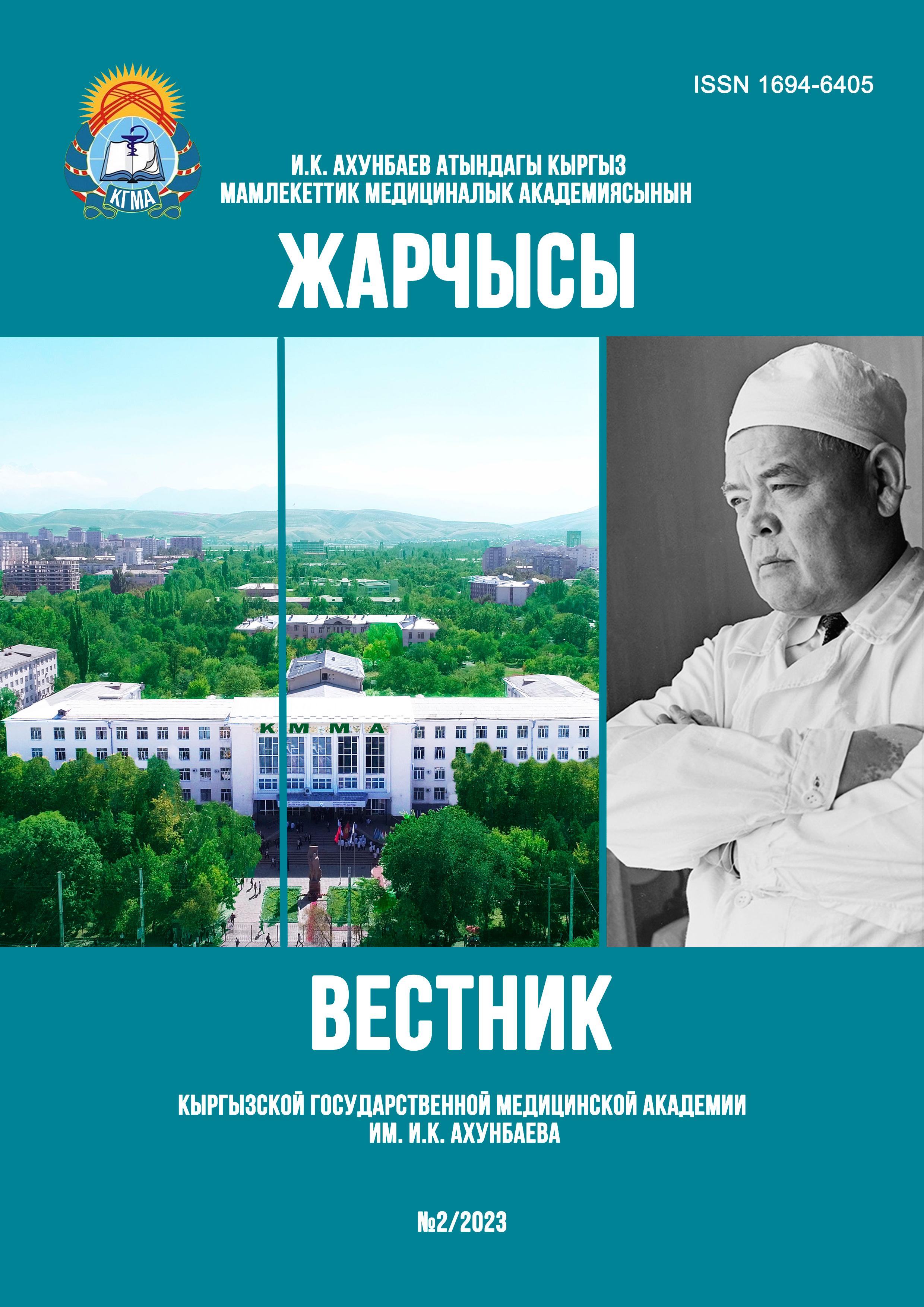LAPAROSCOPIC TECHNOLOGIES IN THE TREATMENT OF NON-TUMOR DISEASES IN COLORECTAL SURGERY
DOI:
https://doi.org/10.54890/1694-6405_2023_2_115Abstract
Results of laparoscopic left-sided hemicolectomy in 92 patients. With a diagnosis of dolichosigma, diverticulosis of the left half of the colon. The main indications for surgery are given, the features of the surgical technique of left-sided hemicolectomy are determined. The main attention is paid to postoperative complications, length of stay in the hospital, and the duration of the operation.
The purpose of the study: to evaluate the effectiveness of laparoscopic technology in the surgical treatment of patients with non-tumor pathology of the colorectal zone.
Materials and methods: a clinical study was conducted on the basis of the educational, medical and scientific medical center of the KSMA, and the city clinical hospital No. 1. The study included 92 patients with dolichosigma and diverticulosis of the left half of the colon. 34 patients were performed by laparoscopic method, 58 patients by laparotomic method.
Results. The average duration of operations was 92 minutes. in the main group, and in the control group 118 min. Analysis of postoperative complications revealed 3 (8.2%) complications in the main group, and 8 (13.7%) cases in the control group. The average time spent in the hospital of the main group was 4.14 ± 1.67, in the control group 10.35 ± 2.47.
Conclusion: the use of laparoscopic technologies in colorectal surgery contributes to the early activation of patients, reduces the postoperative bed-day, and also reduces the number of early postoperative complications.
Keywords:
dolichosigma, diverticulosis of the left half of the large intestine, laparoscopic technologies, laparoscopic hemicolectomy, complications.References
1. Мадаминов А.М., Бектенов Ы.А., Айсаев А.Ю. К вопросу хирургического лечения долихосигмы. Вестник КазНМУ. 2021;(2):19-24. https://doi.org/10.53065/kaznmu.2021.29.19.041
2. Мурадова Ш.М. Роль лапароскопии в лечении дивертикулеза толстой кишки. Медицинский вестник Национальной академии наук Таджикистана. 2019;(2):25-27. https://doi.org/10.31712/2221-7355-2019-9-2-188-192
3. Jacobs M, Verdeja JC, Goldstein HS. Minimally invasive colon resection (laparoscopic colectomy). Surg Laparosc Europe. 1991;1(3):144-150.
4. Han Y., Lin M.B., He Y.G. et al. Laparoscopic surgery for inflammatory bowel disease. the experience in China. J Invest Surg. 2013;26(4): 180-185. https://doi.org/10.3109/08941939.2012.732664
5. Воробьев Г.И., Жученко А.П., Насырина Т.А. Хирургические аспекты хронических запоров у взрослых. Предупреждение и лечение запоров. Тезисы докладов. Тула. 1986:8-10.
6. Pendlimari R, Touzios JG, Azodo IA, Chua HK, Dozois EJ, Cima RR et al. Short-term outcomes after elective minimally invasive colectomy for diverticulitis. Br J Surg. 2011;98(3): 431-435. https://doi.org/10.1002/bjs.7345
7. Темирбулатов В.М. Хирургическое лечение хронического колостаза. Проблемы колопроктологии. 2018;(4):583-587.
8. Kamm M.A. Left hemicolectomy with rectal excision for severe idiopathic constipation. Int. J. Colorectal Dis. 2017;6:49-51.
9. Авазканова Ш.Д. Лечение толстокишечного стаза, обусловленной долихосигмой. Вестник КРСУ. 2014:14(10): 60-63.







